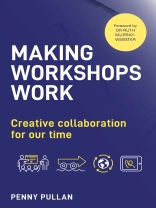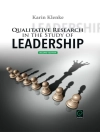Do you face the challenge of running really effective meetings, facilitated sessions or workshops as part of your role?
Would you like to feel more confident when working with challenging groups or senior participants?
Do you want to deliver lasting results collaboratively, in virtual, hybrid and in-person environments?
Making Workshops Work takes you from an initial idea or brief, through step-by-step preparation, to an engaging, well-run and effective session, resulting in agreed actions and clear follow up. You’ll feel confident, creative and competent as you deliver great results. Everyone will be committed to their actions and afterwards, whether you meet virtually, in-person or mix the two. Penny Pullan is a pioneer of virtual working and one of the world’s leading experts on running effective workshops. Her expertise and candid stories will inspire at every stage, to ensure that you are fully prepared to make the best use of your own and your participants’ valuable time.
Discover:
- A practical step-by-step guide to get the most out of group sessions quickly whether virtual or in-person
- Memorable case studies, stories and examples to highlight what really works and what doesn’t
- Downloadable tools, templates and checklists to reduce your preparation time and enhance your effectiveness
- Reflective questions and exercises to help you develop your own approach, building on what works for you and adapting what doesn’t, so that each workshop is better than the last
Dr Penny Pullan is the author of several books including ‘Virtual Leadership: Practical Strategies for Getting the Best out of Virtual Work and Virtual Teams'(Kogan Page, 2016). She works with people in multinational organizations who are grappling with tricky projects: uncertain, with ambiguous requirements, stakeholders who need to be engaged and virtual teams dispersed around the world. When they work with Penny, clients notice that communication, collaboration, clarity, commitment, connection and confidence grow, and change doesn’t seem quite as tricky as before!
Daftar Isi
Table of Contents Table of Contents About the Author Acknowledgements
© Penny Pullan 2016 Page 7 of 10 Foreword: Bestselling business author – to be confirmed. Possibly Pam Slim (USA) or Professor Eddie Obeng (UK) Introduction: This sets out the philosophy behind the book, who should read it and why, and explains how applying the book will enhance the reader’s workshops and meetings. It introduces the author’s story and explains the book’s layout and the associated website and other resources. FOUNDATIONS Chapter 1: The ups and downs of Meetings and Workshops This chapter looks at working with groups in business, exploring what really happens. Expect to learn from and be entertained by real-life horror stories gathered from around the world, which are likely to be anonymous for obvious reasons! You’ll also hear of people doing amazing things through workshops, both face-to-face and virtual, which will encourage you and help you to gather ideas about what works. Chapter 2: What makes an effective workshop leader in different contexts? This chapter examines the mindset of the workshop leader and the attitudes, behaviours and values that come together to make someone really effective in both face-to-face and virtual settings. It will explore the different contexts for workshops in business, from learning, setting strategy and tactics, planning, managing change, understanding requirements and innovation. Chapter 3: What makes people tick? (including workshop leaders!) This chapter will bring in just enough psychology, neuroscience, learning theory, visual thinking, change, design thinking and leadership to give the reader a solid foundation for understanding their session participants (and themselves!) It will be easy to read and, although some of the concepts can be quite complex, they will be delivered in simple, accessible, bite-sized chunks appropriate and helpful for workshop leaders. They will be illustrated with stories and examples to bring the ideas to life. YOUR SESSION Chapter 4: Planning a Brilliant Workshop This chapter will focus on preparation for a particular workshop, exploring: • What are you trying to achieve? What will success look like? • Who should be involved? Why? • What format will the session take? Face-to-face or virtual? What will the environment be? How should the space be laid out? What technology can you use? How can you use time outside of the meeting to support you? • What other resources are available for you? • What issues do you face? What risks might happen, both threats and opportunities? Once this initial preparatory work is complete, it moves into the detailed session planning:
© Penny Pullan 2016 Page 8 of 10 • What is the purpose of your session? • What are the more detailed objectives? • What’s the time plan? • Who is doing what? • How will you work together? (Ground rules) • What will happen next? Once this planning is complete, then you can decide what elements to bring together to make your workshop work, as outlined in Chapter 4. Chapter 4: Choosing your activities, and what you need to make them happen. This chapter explains the options for helping people get to know each other, generating ideas, building engagement, decision making, building consensus and what you need to make these activities run smoothly . This chapter also looks at what’s needed to support your activities. When referring to technology, the book won’t dive deep into any particular technology solution to ensure that the content stays fresh for longer. Chapter 5: Running the Workshop This chapter explores how to lead synchronous virtual meetings: preparation for success; making virtual meetings work through engaging people; achieving action through virtual meetings. Chapter 6: Making sure actions get done! Too many meetings and workshops of all types end up without really achieving anything. This chapter will look at how to ensure clear actions, follow-up and that your sessions deliver results. It will also cover evaluation and ongoing improvements. Chapter 7: Special Considerations for Virtual Workshops This chapter expands on previous chapters, showing where virtual workshops are different. It highlights areas to consider carefully and demonstrates opportunities for achieving things that would be much harder with everyone together. It will include specific tips for preparing for and running virtual workshops and meetings, especially how to keep remote participants engaged. (Virtual workshops are considered throughout the book, but focused on in this chapter.) WHEN IT GETS COMPLICATED… Chapter 8: Workshop complications, and how to overcome them This chapter explores the many different areas that add complexity in workshops, touching on: • Culture, • Generation, • Language, • Energy, or lack of it, • And much, much more! PUTTING IT ALL TOGETHER Chapter 9: Applying this in practice
© Penny Pullan 2016 Page 9 of 10 This chapter includes a range of real, practical workshop situations and challenges faced by meeting leaders, which will be gathered by the author during her research. Drawing from content and ideas from chapters across the book, the author will weave together her response on how best to tackle each situation or challenge. While there is more detail elsewhere, this is designed to give quick, practical advice that the workshop leader can apply straight away. INSPIRATION Chapter 10: How to make your workshops work! This short chapter will summarise the key messages of the book and encourage the reader to apply what they’ve learned. Further Reading Index Resources About the Author
Tentang Penulis
Dr Penny Pullan is the author of several books including ‘Virtual Leadership: Practical Strategies for Getting the Best out of Virtual Work and Virtual Teams'(Kogan Page, 2016). She works with people in multinational organizations who are grappling with tricky projects: uncertain, with ambiguous requirements, stakeholders who need to be engaged and virtual teams dispersed around the world. When they work with Penny, clients notice that communication, collaboration, clarity, commitment, connection and confidence grow, and change doesn’t seem quite as tricky as before!












